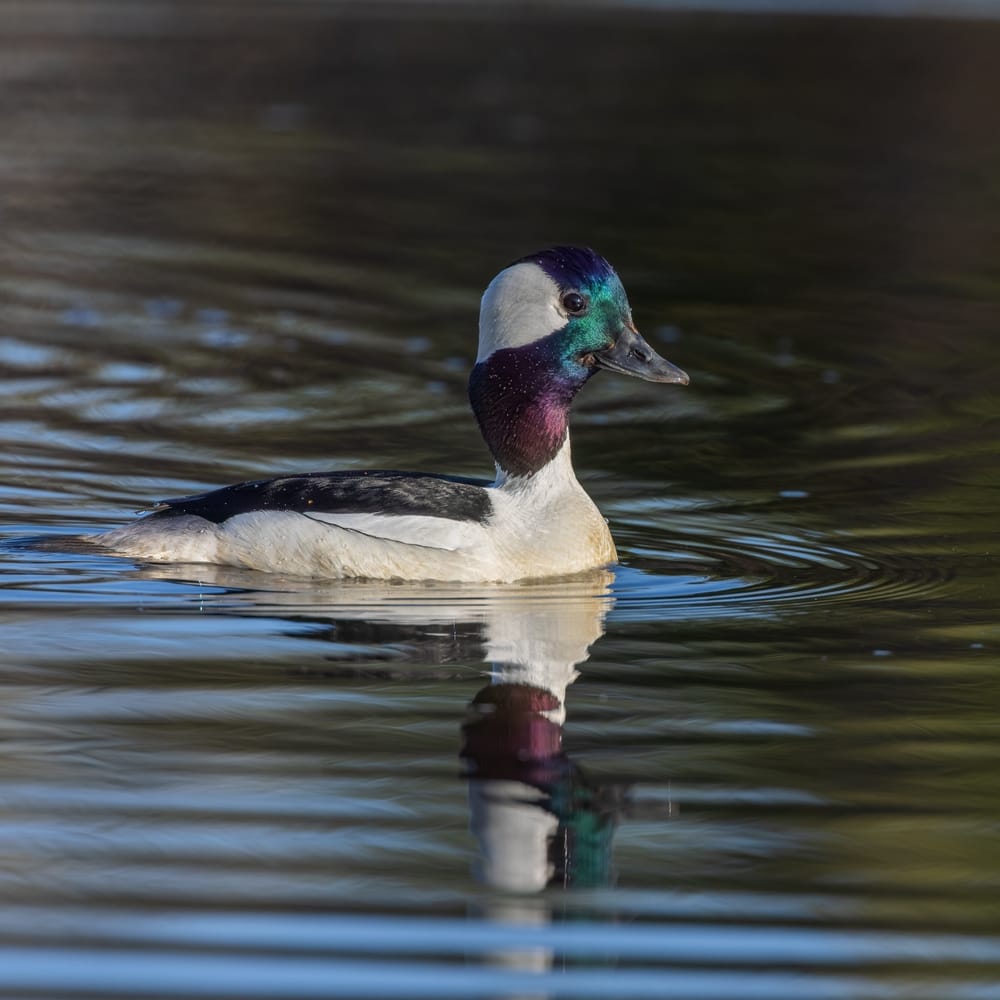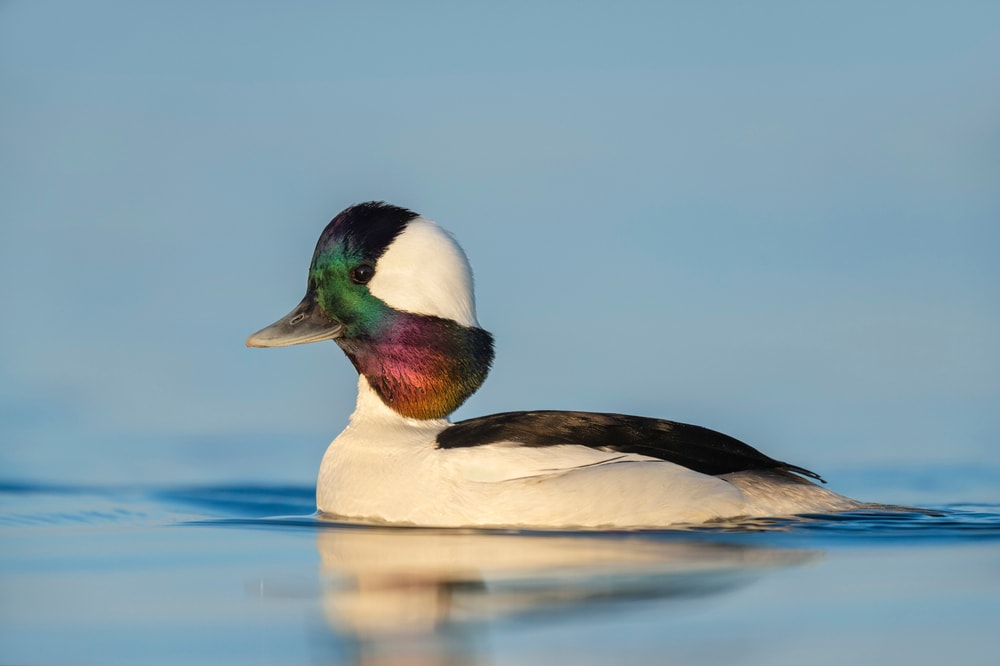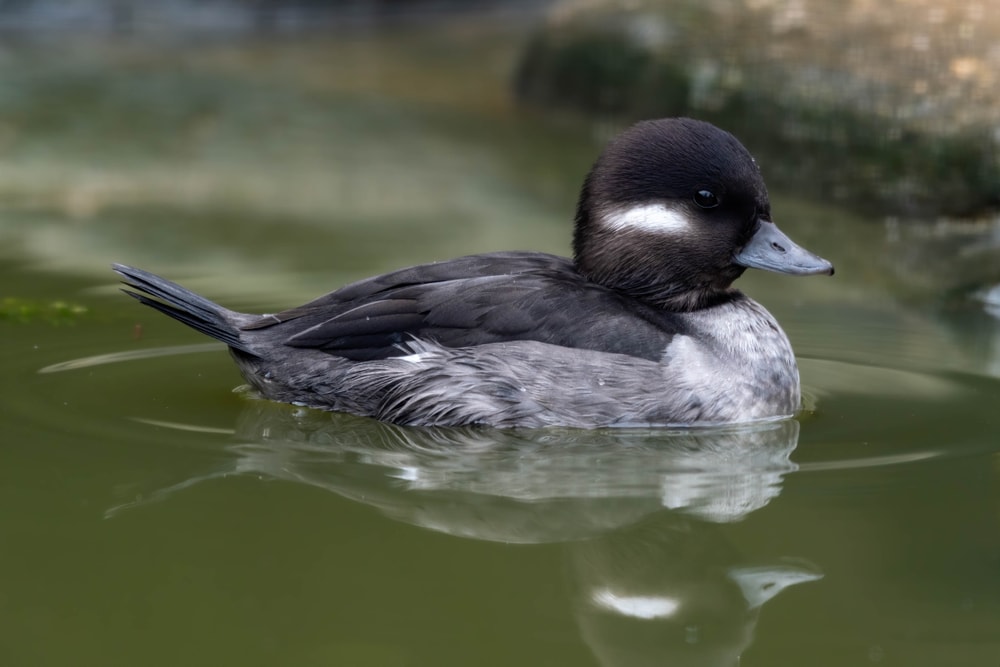Outforia Quicktake: Key Takeaways
- Buffleheads are North America’s smallest diving ducks, found near various water bodies.
- They have a monogamous mating system and can live up to 2.5 years in the wild.
- Their diet consists of invertebrates, mollusks, snails, shrimp, dragonflies, and damselfly nymphs.
- Buffleheads have a conservation status of least concern, with a population of around 1.3 million.
- These ducks are known for their striking plumage on males and quirky mating rituals.
Among the 29 diverse duck species inhabiting North America, the bufflehead undoubtedly captures the most attention. These captivating ducks journey in intimate groups from the frosty Arctic Canadian landscapes down to the warmer southern United States. Sightings of a lone bufflehead often indicate the presence of others in the vicinity or en route.
As the continent’s tiniest diving duck, the bufflehead boasts a flourishing population across North America. For those residing near bodies of water, it is highly likely that you have already witnessed the elegant beauty of this unique duck.
The bufflehead is renowned for its striking plumage adorning the drakes and their whimsical courtship displays in pursuit of a mate.
Curious to know more about what sets the bufflehead apart? Dive into the fascinating world of this exceptional duck and discover where you can observe them up close and personal.
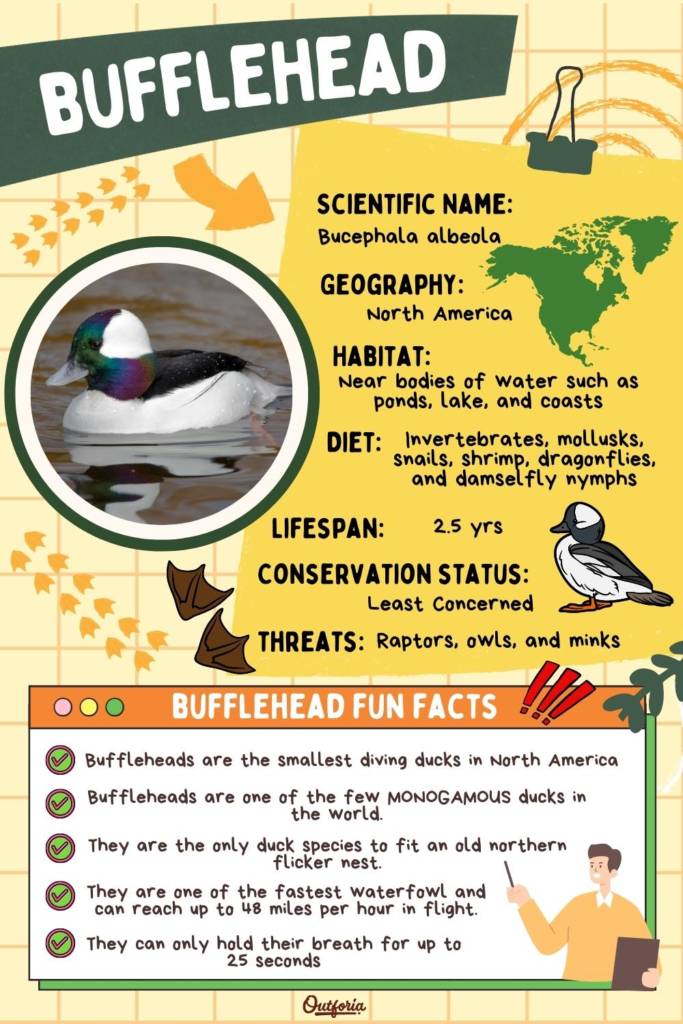
Share this image on your site
<a href="https://outforia.com/bufflehead/"><img style="width:100%;" src="https://outforia.com/wp-content/uploads/2022/08/bufflehead-infographic-683x1024.jpg"></a><br>bufflehead <a href="https://outforia.com">Outforia</a>Buffleheads: Exploring the Story Behind Their Distinctive Moniker
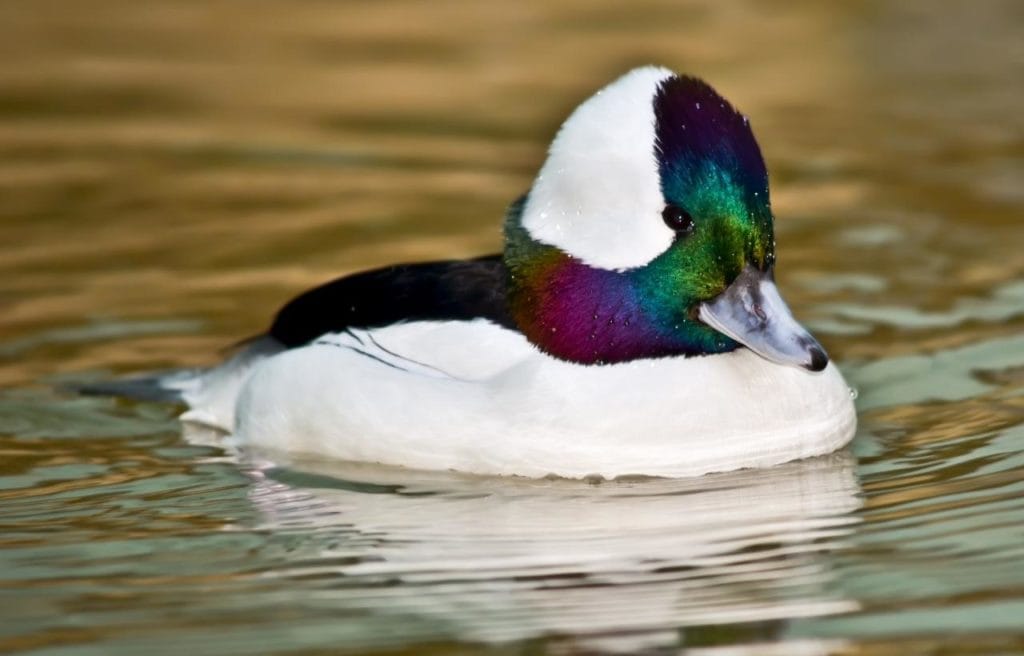
The charming bufflehead (Bucephala albeola) derives its name from the resemblance of the male’s head to that of a buffalo. Initially, ornithologists dubbed this species the “buffalo duck,” with the term “bufflehead” emerging as a more concise adaptation of the original moniker.
Hunters occasionally refer to these ducks as “butterballs,” a nickname attributed to the substantial fat reserves they accumulate during migration to sustain their long, arduous journeys.
Distinguishing Features and Close Cousins
As the smallest diving ducks in North America, buffleheads bear a striking resemblance in size to goldeneyes. Both male and female buffleheads weigh between 9.6 and 22.4 ounces (272.2 and 635 grams), with a wingspan measuring 21.6 inches (54.9 centimeters).
Males exhibit more vibrant colors than females, boasting large heads adorned with a distinct white patch behind their light brown eyes. This striking feature often leads to confusion between buffleheads and the hooded merganser. However, the bufflehead’s smaller size and the white patch not wrapping around its head can help differentiate the two species.
In contrast, female buffleheads display a more subdued color palette, with light brown hues on their head and body. A modest white patch beneath their eyes serves as the only conspicuous marking on their heads.
Buffleheads on the Move: Tracing Their Geographic Range and Migration Patterns
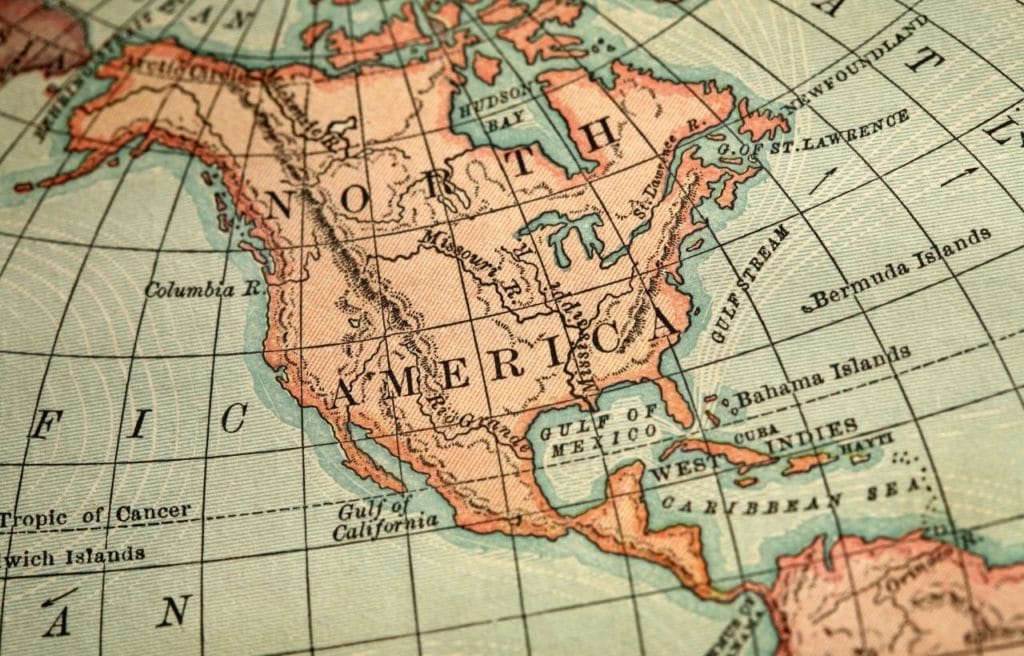
Buffleheads display a wide geographical range across North America, depending on the season. These ducks are consistently found in close proximity to water sources, typically inhabiting ponds and lakes, while those dwelling in oceanic environments prefer coastal areas.
The year commences with buffleheads wintering in the central and southern regions of the United States. As winter recedes and spring emerges, these ducks embark on an extensive migration, with some reaching the remote northern territories of Canada and Alaska.
During their migration, buffleheads can be spotted throughout North America. As they traverse the continent, these ducks pause at any available water sources, regardless of depth. Some buffleheads even opt to rest in small irrigation ponds, demonstrating their adaptability and resourcefulness.
Bufflehead Sightseeing: Top Destinations for an Unforgettable Birdwatching Experience
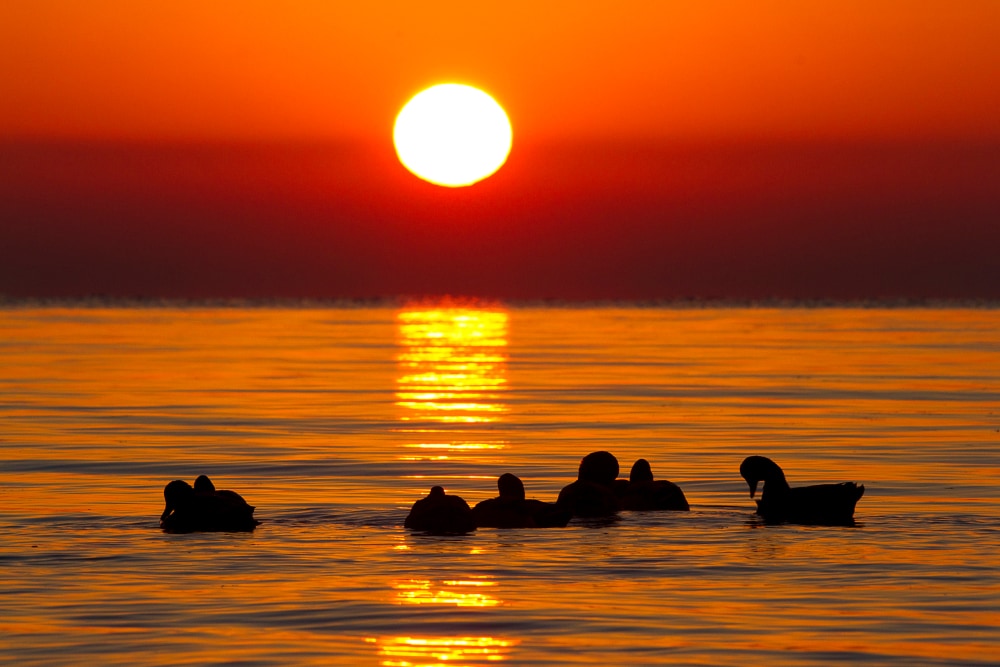
Given their vast range, buffleheads can be seen by anyone residing near a body of water as their migratory path spans across North America. Consequently, there are numerous prime locations to observe these fascinating birds.
On the East Coast, the eastern shore of Chesapeake is among the top birdwatching destinations. The Eastern Neck National Wildlife Refuge, a sprawling 2,285-acre (9.2 sq. km) sanctuary, is an ideal spot to catch a glimpse of the bufflehead.
Both saltwater and freshwater marshes entice buffleheads up and down the coast. During migration, it’s possible to witness hundreds of them resting at various ponds and marshlands.
The Great Lakes, situated at the heart of the continent, provide excellent opportunities to observe migrating buffleheads. These vast bodies of water offer numerous coves for ducks to rest and forage during their journey.
Long Point Conservation Area on Lake Erie, the lake’s longest land point, is a protected and predominantly undeveloped region. Here, birdwatchers can spot buffleheads during migration, while also enjoying trails and camping facilities.
West of the Rockies, year-round bufflehead sightings can be enjoyed at various locations. The picturesque Oregon coast presents a stunning backdrop for observing sea ducks. Diving ducks, including buffleheads, can also be found seeking refuge in coves like Nehalem Bay. From the ocean, they venture to nearby bodies of water in search of shelter and safety.
Delving into the Bufflehead’s Diet: A Glimpse of Their Underwater Feeding Habits
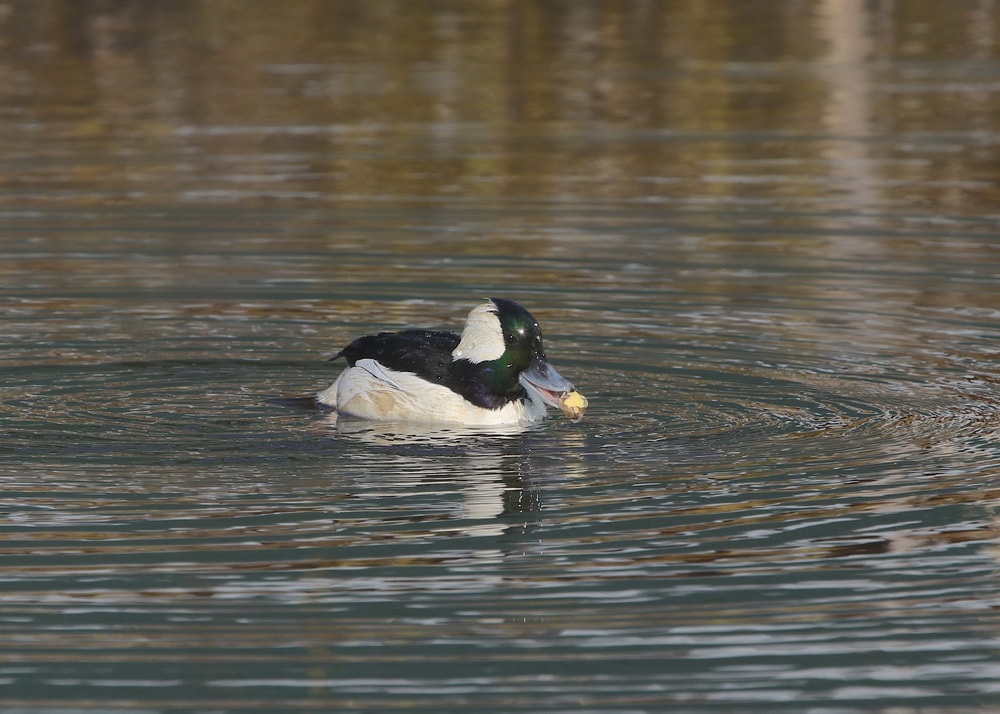
Bufflehead ducks predominantly feed underwater, with entire colonies diving for approximately 20 seconds to forage for invertebrates. While feeding, one group member remains afloat, vigilantly serving as an alarm for potential predators.
The bufflehead’s diet varies according to migration patterns. Saltwater buffleheads typically feed on mollusks, snails, and shrimp found in shallow coastal pools. This diet remains available to coastal ducks throughout the year.
In contrast, buffleheads residing in inland ponds primarily consume dragonflies and damselfly nymphs. During winter, freshwater buffleheads alter their diet, opting for seeds from marsh grasses. The abundance of seeds compensates for the scarcity of invertebrates during this season.
You may also like: 30 Different Types Of Ducks: Pictures, Facts & Chart
Buffleheads in Love: Discovering Their Unique Mating Behaviors and Reproduction Strategies
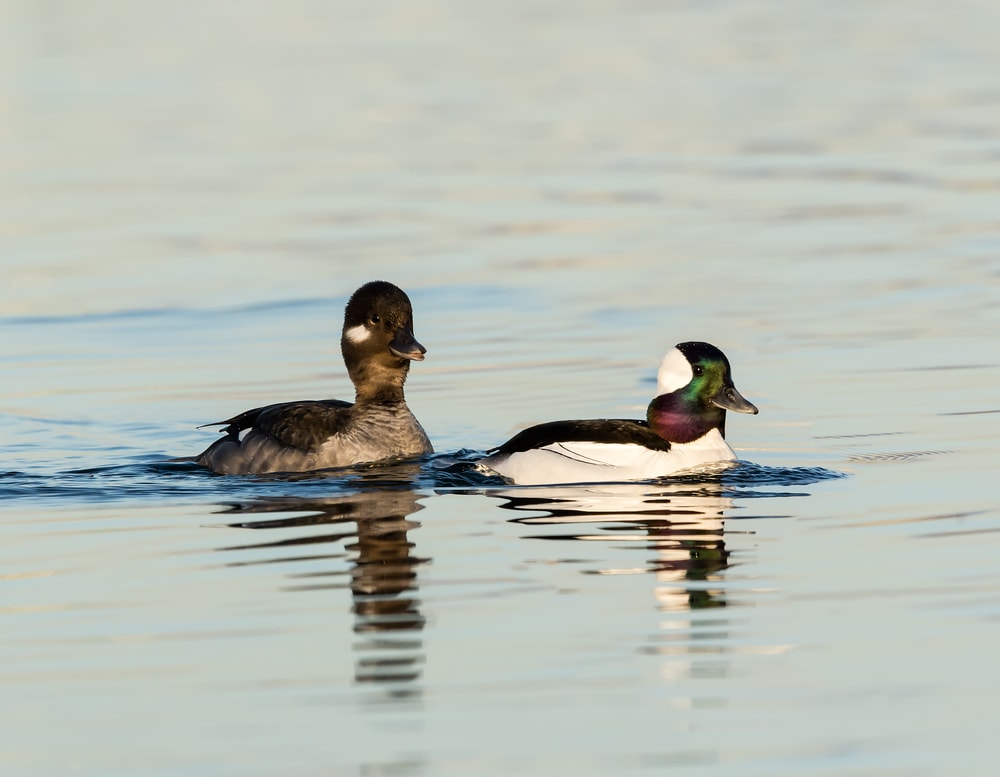
Buffleheads stand out as one of the few monogamous duck species globally. However, if one partner passes away, the surviving duck will eventually begin nesting with another mate.
The courtship ritual commences when a male bufflehead approaches a potential mate. The male performs a series of head bobs and glides his bill across the water’s surface. This initial display is followed by more pronounced bobbing of the head and neck to attract the female’s attention.
When confronted by a rival male, a bufflehead first leans back in a defensive posture. With their feet barely touching the water, both ducks rapidly flap their wings at each other. If the competition persists, one of them will assert dominance by flying and diving over the other ducks.
Males also perform diving displays for females, showcasing their striking white breasts to entice potential mates. Once a pair of buffleheads has settled on a partner, the females begin the search for suitable nesting sites.
Each year, female buffleheads lay between 4 to 17 cream-colored eggs. Given the numerous predators preying on the vulnerable ducklings, a larger brood increases the chances of offspring reaching breeding age.
You may also like: How Do Ducks Mate? It’s Weirder Than You Think
Finding Home: Uncovering the Bufflehead’s Nesting Preferences and Strategies
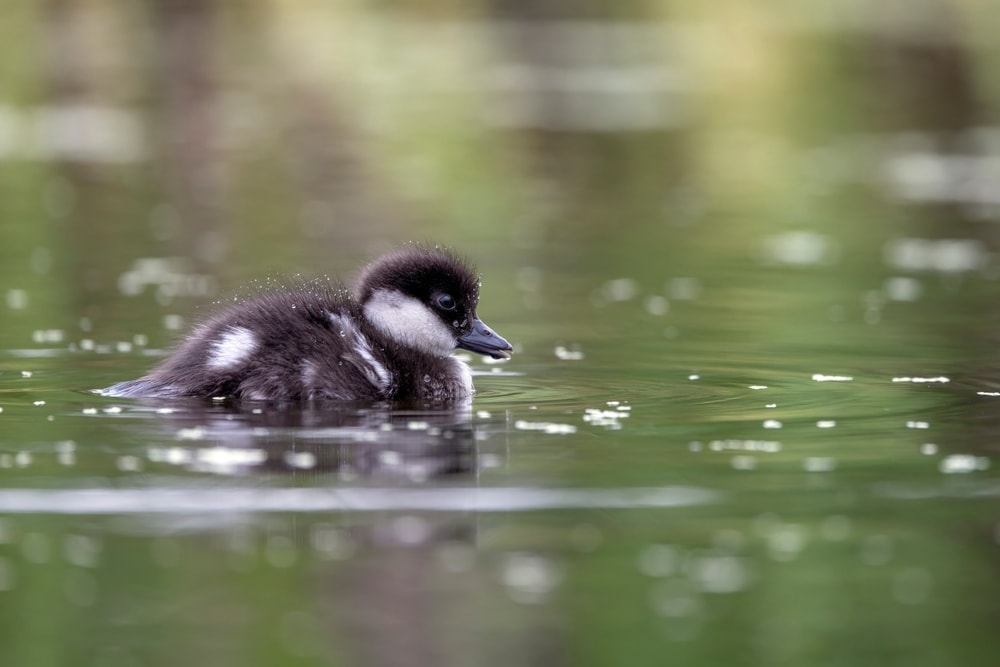
As the breeding season commences, buffleheads relocate to smaller lakes and ponds. Female ducks arrive to inspect poplar or aspen trees, searching for suitable nesting sites, often returning to the same area year after year.
Uniquely among duck species, buffleheads are small enough to occupy old nests of northern flickers. Flickers are skilled at drilling, creating deeper nests that provide enhanced protection for the buffleheads.
A few days after hatching, the ducklings bravely leap from their nest to the forest floor. The mother then guides her offspring towards the water, where they swiftly learn to swim. After caring for the hatchlings for 5 to 6 weeks, the mothers depart to molt, leaving their young behind.
The mothers reunite with the males, who have already molted their flight feathers. Meanwhile, the ducklings continue to develop their flying skills, hoping to eventually join their families in the future.
You may also like: How Do Birds Mate & Where Do Eggs Come From?
Across North America: Tracing the Bufflehead’s Two Main Migration Routes
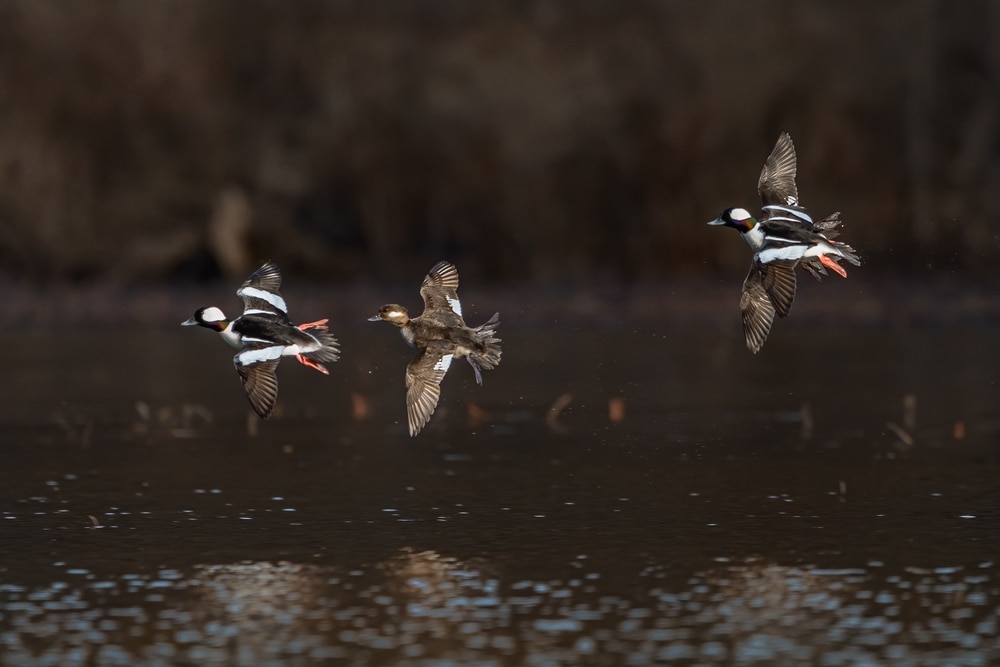
Buffleheads follow two main migration routes across North America. Those residing west of the Rockies migrate from Canada and Alaska towards the Pacific during winter. Occasionally, buffleheads remain year-round in certain regions of Washington and Oregon.
Buffleheads that breed in Central and Eastern Canada travel south and east. Their migration path begins in Northern Canada and extends past the Great Lakes.
Upon reaching this point, the ducks have the option to proceed towards the coast or continue heading south. They scout for large bodies of water, where they can feed and reside along the coastal areas throughout the winter months.
You may also like: 40 Different Types Of Birds Across The World: Photos + Facts
The Bufflehead’s Lifespan: Their Longevity in the Wild
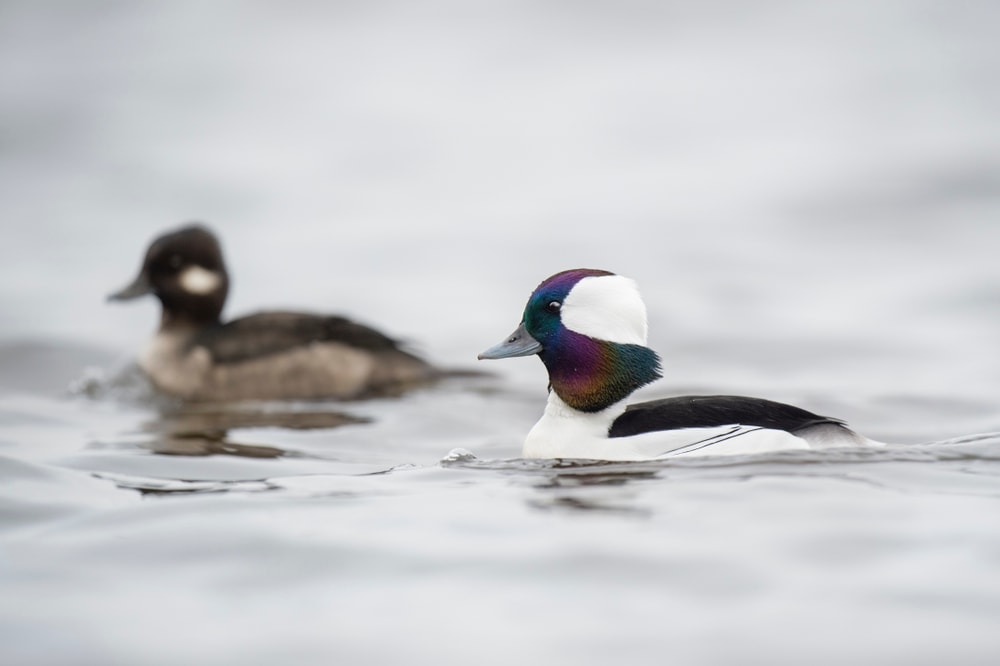
In the wild, buffleheads typically have an average lifespan of 2.5 years. In a remarkable case from 1973, an 18-year-old bufflehead was caught and released in New York, earning the title of the oldest documented bufflehead—a truly impressive feat for a duck!
The bufflehead’s small size makes it more susceptible to predation compared to larger duck species. Consequently, its expected lifespan is significantly shorter than that of mallards or mergansers.
Bufflehead ducklings are particularly vulnerable to predators before mastering their diving skills. These factors contribute to the bufflehead having one of the shortest lifespans among all duck species.
You may also like: Cinnamon Teal: The Duck With Brown-Feathered Appeal
Population and Conservation: Assessing Their Current Status and Future Challenges
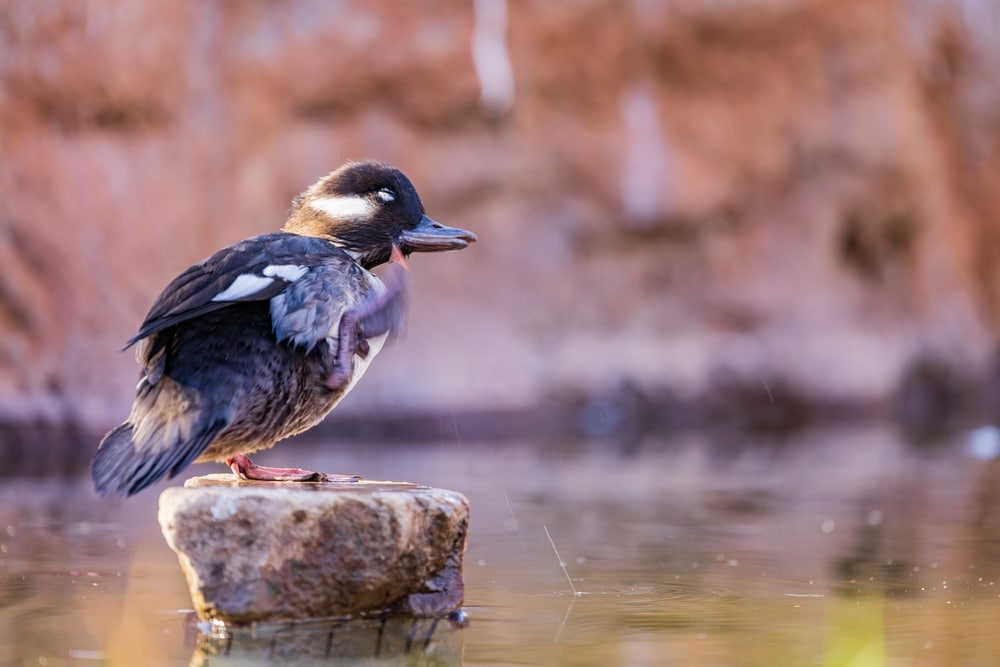
The bufflehead currently holds a conservation status of “least concern,” with an impressive and growing population of approximately 1.3 million ducks. Their vast range across North America ensures that they do not face habitat scarcity.
However, the primary threat to this species in the future could be habitat degradation. Deforestation may drive them away from their northern breeding grounds, potentially disrupting their population.
Habitat loss would be particularly detrimental to the bufflehead, as mating pairs tend to return to the same hatching grounds each year. Consequently, preserving their habitats is crucial for the continued success and flourishing of this remarkable species.
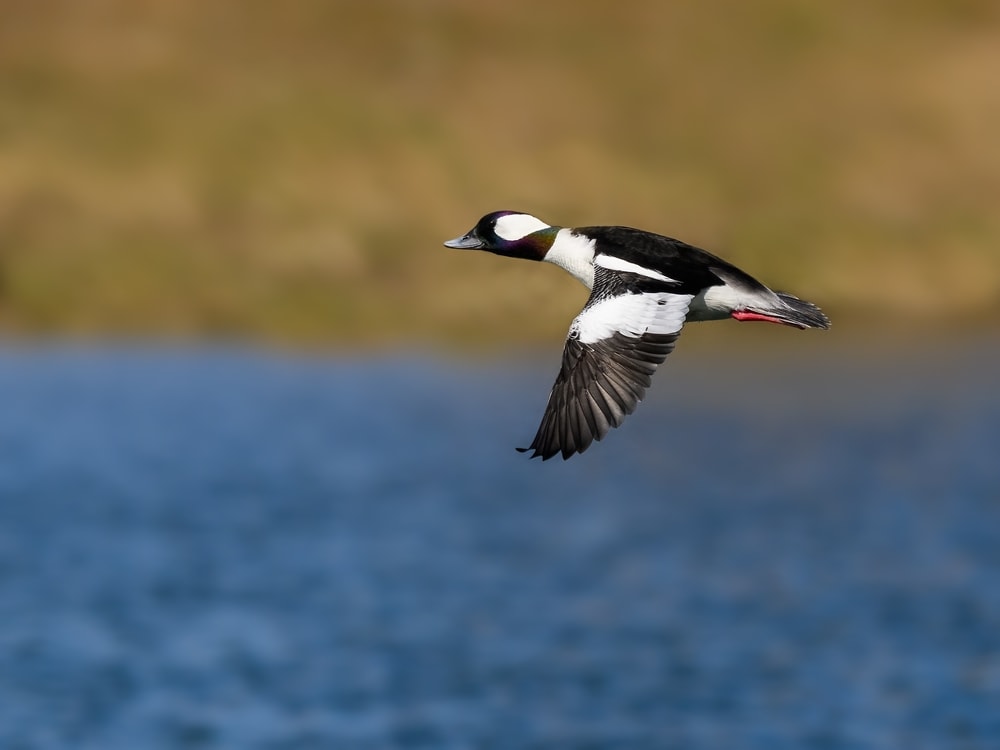
Buffleheads play a crucial role in the ecosystem by assisting in the seed dispersal of various marsh plants. As these ducks travel, seeds become lodged in their feathers and feet, enabling the plants to grow and thrive in new locations.
Buffleheads also contribute to maintaining a balanced ecosystem by preying on insects, isopods, mollusks, and crustaceans. Their diet helps regulate the population levels of these species. In turn, buffleheads serve as prey for raptors, owls, and minks, highlighting the interconnectedness of the natural world and the importance of each species within it.
Fun Facts
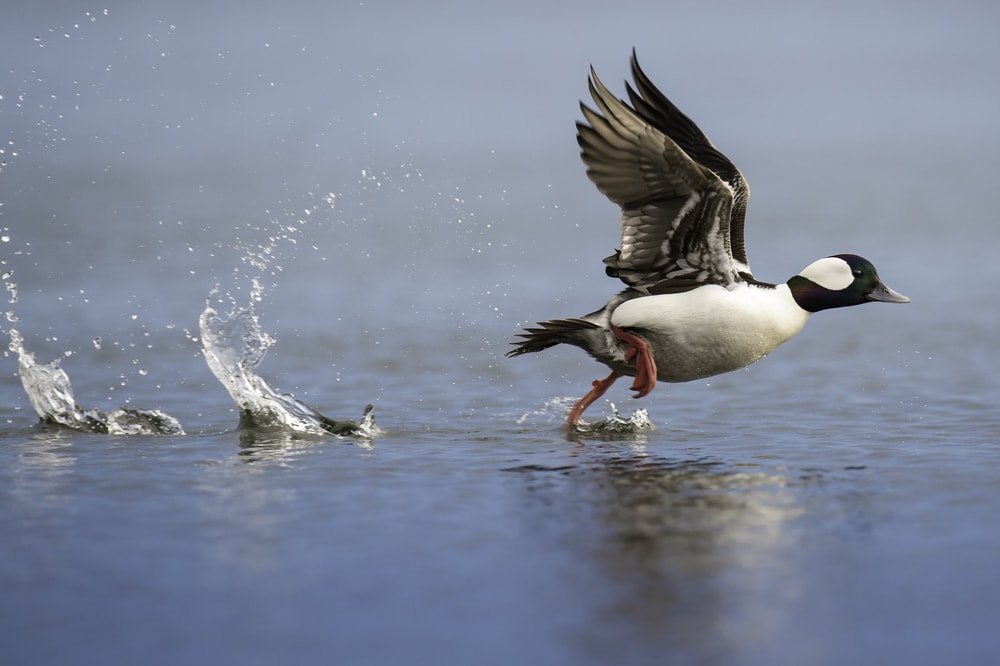
FAQ
How do I call a bufflehead?
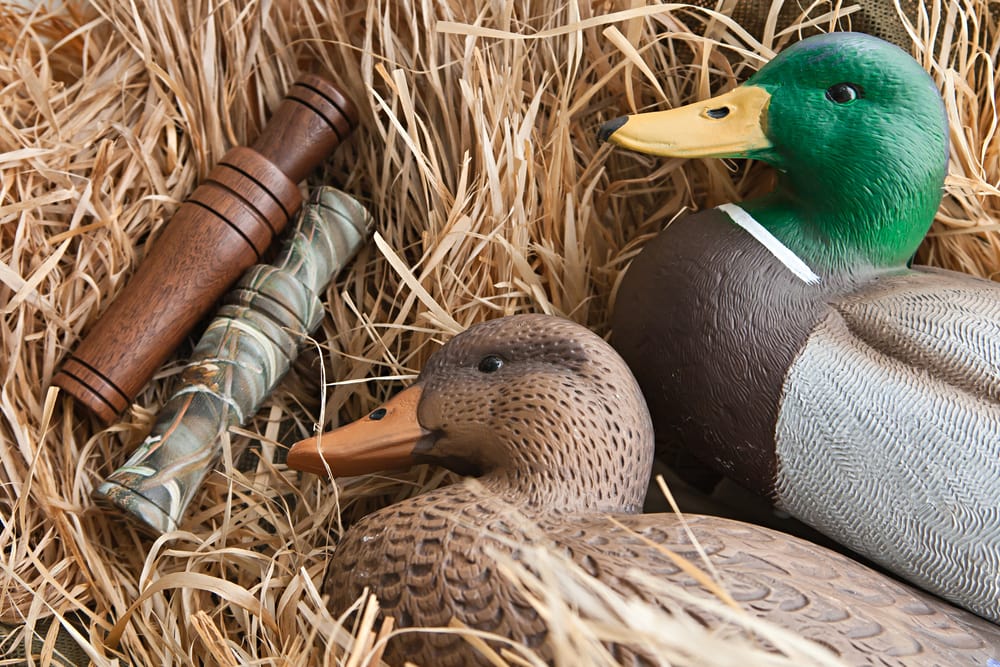
Hunters and bird watchers often find it challenging to lure diver ducks using calls. However, one effective method involves using a mallard call and purring into the device. This sound mimics the ducks’ chatter call and piques the interest of nearby buffleheads.
Diver ducks, including buffleheads, are more inclined to be attracted to decoys rather than calls due to their natural grouping behavior. As they migrate overhead, having a well-placed set of decoys significantly increases the chances of enticing these ducks to make a stopover.
Can I hunt buffleheads?
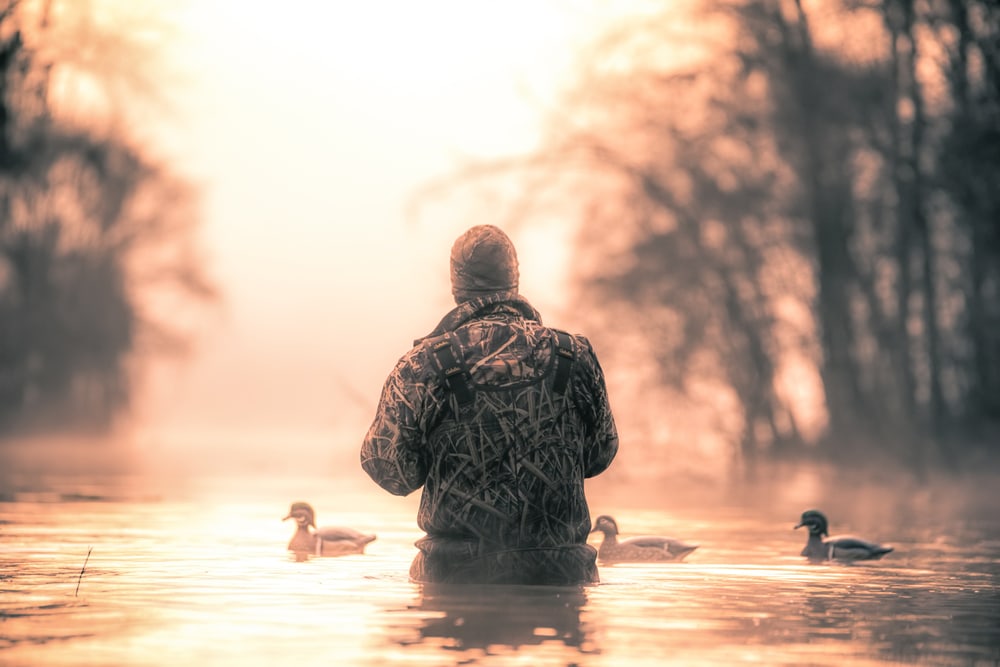
Buffleheads are sought-after gamebirds among hunters, with the typical hunting season spanning from late fall through the end of the year. The exact duration of the duck season depends on the state where the hunt takes place. Therefore, it is essential to check local regulations before engaging in any hunting or harvesting activities.
Utilizing decoys is an effective way to attract buffleheads. By positioning decoys in appealing locations, hunters can entice these diving ducks to approach.
Despite their popularity, buffleheads are not hunted as extensively as other duck species. In fact, only around 1 to 1.5% of ducks harvested in the United States are buffleheads. The relatively small amount of harvestable meat on these ducks deters many hunters from putting in the effort. However, the distinctive markings on the male bufflehead make it a popular choice for wall-mounted displays among duck hunters.
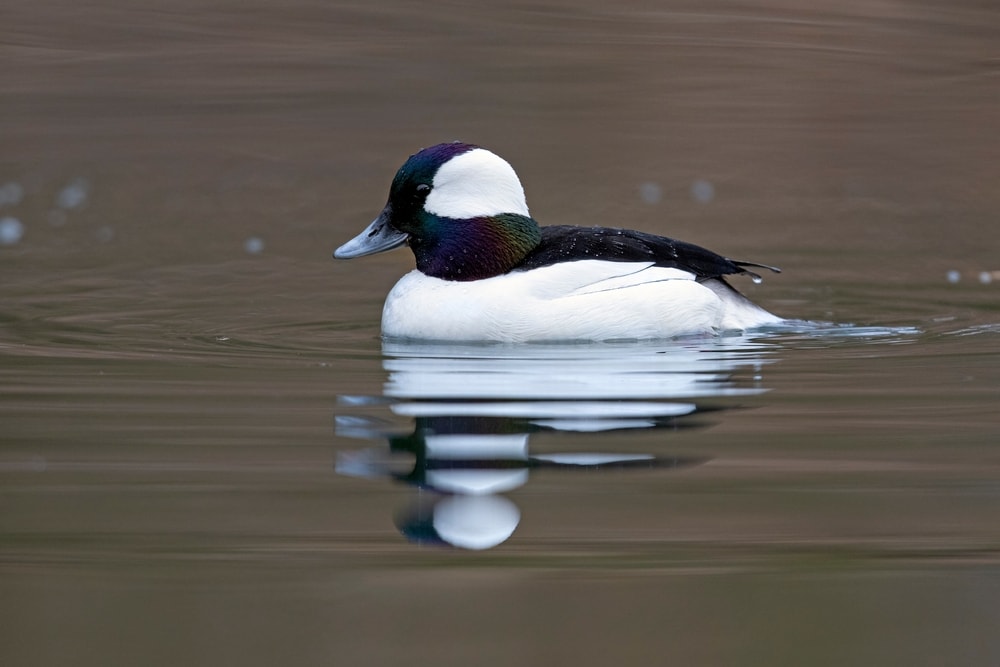
Buffleheads are indeed not a species of merganser, despite their resemblance to the hooded merganser. Rather, buffleheads belong to one of the two goldeneye species.
Both goldeneyes and buffleheads are part of the Bucephala genus, sharing more similarities in size and behavior than with mergansers. Mergansers, on the other hand, are superior swimmers and proficient at diving to catch fish. The distinct lineage of buffleheads and goldeneyes sets them apart from the merganser species.
Can you spot them outside of North America?
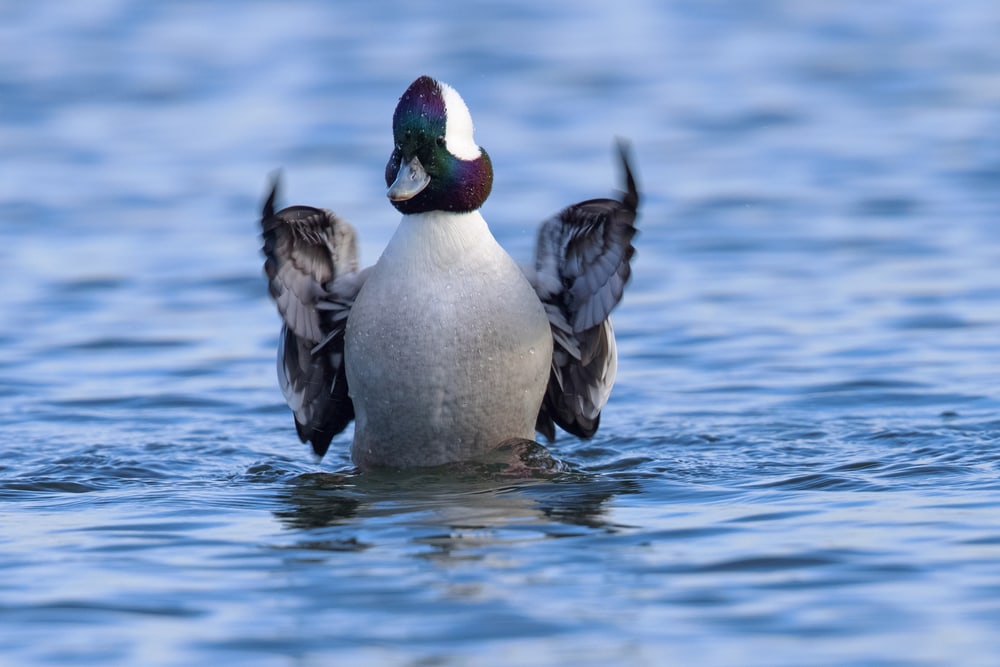
Buffleheads are indeed exceptionally rare outside of North America. Although they nest in the northern parts of the continent, it is unusual for them to venture over to Asia.
Occasionally, these ducks have been spotted during winter as far west and east as Russia, Japan, Iceland, and the British Isles. In such instances, it is likely that strong winds or adverse weather conditions have caused the buffleheads to deviate from their usual migratory routes.



